Exploring the Spatial Heterogeneity of Residents' Marginal Willingness to Pay for Clean Air in Shanghai
- PMID: 35004592
- PMCID: PMC8739791
- DOI: 10.3389/fpubh.2021.791575
Exploring the Spatial Heterogeneity of Residents' Marginal Willingness to Pay for Clean Air in Shanghai
Erratum in
-
Corrigendum: Exploring the Spatial Heterogeneity of Residents' Marginal Willingness to Pay for Clean Air in Shanghai.Front Public Health. 2022 Feb 10;10:854259. doi: 10.3389/fpubh.2022.854259. eCollection 2022. Front Public Health. 2022. PMID: 35223751 Free PMC article.
Abstract
Previous studies have paid little attention to the spatial heterogeneity of residents' marginal willingness to pay (MWTP) for clean air at a city level. To fill this gap, this study adopts a geographically weighted regression (GWR) model to quantify the spatial heterogeneity of residents' MWTP for clean air in Shanghai. First, Shanghai was divided into 218 census tracts and each tract was the smallest research unit. Then, the impacts of air pollutants and other built environment variables on housing prices were chosen to reflect residents' MWTP and a GWR model was used to analyze the spatial heterogeneity of the MWTP. Finally, the total losses caused by air pollutants in Shanghai were estimated from the perspective of housing market value. Empirical results show that air pollutants have a negative impact on housing prices. Using the marginal rate of transformation between housing prices and air pollutants, the results show Shanghai residents, on average, are willing to pay 50 and 99 Yuan/m2 to reduce the mean concentration of PM2.5 and NO2 by 1 μg/m3, respectively. Moreover, residents' MWTP for clean air is higher in the suburbs and lower in the city center. This study can help city policymakers formulate regional air management policies and provide support for the green and sustainable development of the real estate market in China.
Keywords: air pollution; geographically weighted regression; housing prices; marginal willingness to pay; spatial heterogeneity.
Copyright © 2021 Lai, Liu, Li, Li, Zou and Tu.
Conflict of interest statement
The authors declare that the research was conducted in the absence of any commercial or financial relationships that could be construed as a potential conflict of interest.
Figures


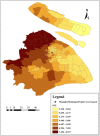
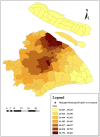

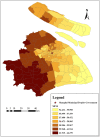

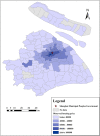
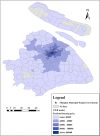
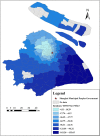

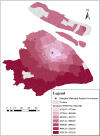


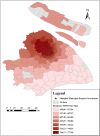
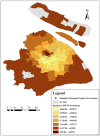
References
-
- Chen J, Hao Q, Yoon C. Measuring the welfare cost of air pollution in Shanghai: evidence from the housing market. J Environ Plan Manag. (2018) 61:1744–57. 10.1080/09640568.2017.1371581 - DOI
-
- Li WX, Pu ZY, Li YY, Tu MT. How does ridesplitting reduce emissions from ridesourcing? A spatiotemporal analysis in Chengdu, China. Transport Res Part D-Transport Environ. (2021) 95. 10.1016/j.trd.2021.102885 - DOI
-
- Zhang BB, Wu BB, Liu J. PM2.5 pollution-related health effects and willingness to pay for improved air quality: evidence from China's prefecture-level cities. J Clean Prod. (2020) 273: 122876. English. 10.1016/j.jclepro.2020.122876 - DOI
-
- Dong J, Zeng X, Mou X, Li X. Pay for clean air or not? The impact of air quality on China's real estate price. Syst Eng Theor Pract. (2020) 40:1613–26. Chinese. 10.12011/1000-6788-2020-0436-14 - DOI
Publication types
MeSH terms
Substances
LinkOut - more resources
Full Text Sources
Medical
Miscellaneous

